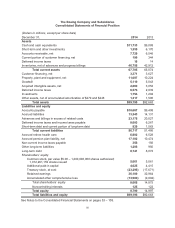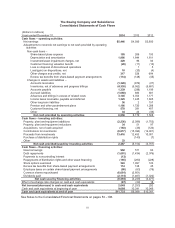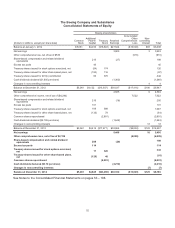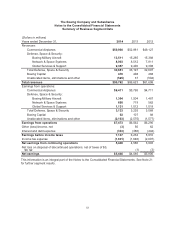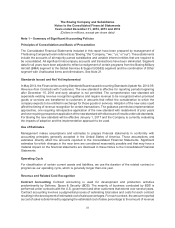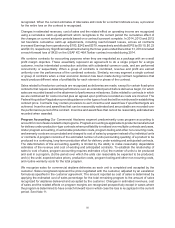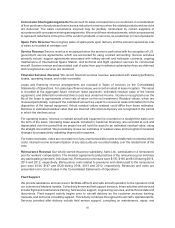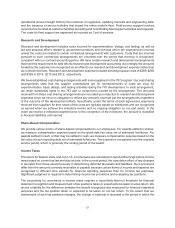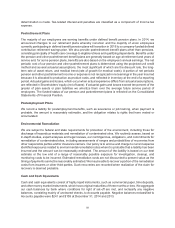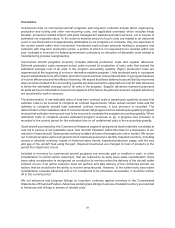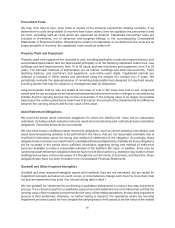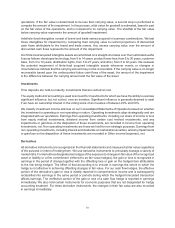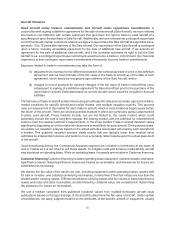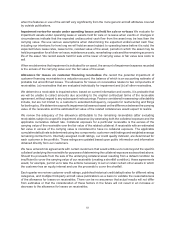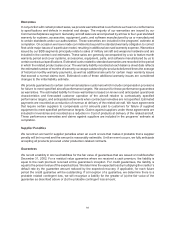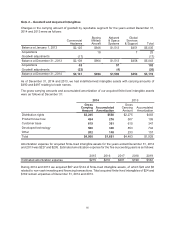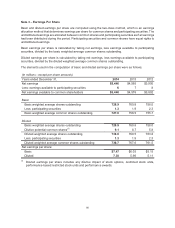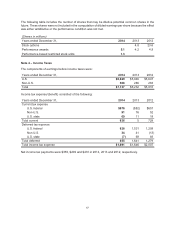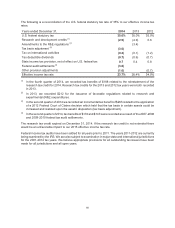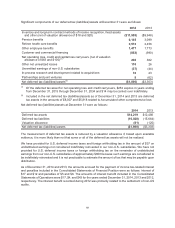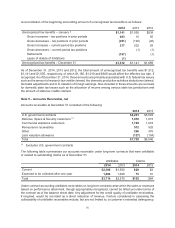Boeing 2014 Annual Report Download - page 72
Download and view the complete annual report
Please find page 72 of the 2014 Boeing annual report below. You can navigate through the pages in the report by either clicking on the pages listed below, or by using the keyword search tool below to find specific information within the annual report.60
Precontract Costs
We may, from time to time, incur costs in excess of the amounts required for existing contracts. If we
determine the costs are probable of recovery from future orders, then we capitalize the precontract costs
we incur, excluding start-up costs which are expensed as incurred. Capitalized precontract costs are
included in Inventories, net of advances and progress billings, in the accompanying Consolidated
Statements of Financial Position. Should future orders not materialize or we determine the costs are no
longer probable of recovery, the capitalized costs would be written off.
Property, Plant and Equipment
Property, plant and equipment are recorded at cost, including applicable construction-period interest, less
accumulated depreciation and are depreciated principally over the following estimated useful lives: new
buildings and land improvements, from 10 to 40 years; and new machinery and equipment, from 3 to 20
years. The principal methods of depreciation are as follows: buildings and land improvements, 150%
declining balance; and machinery and equipment, sum-of-the-years’ digits. Capitalized internal use
software is included in Other assets and amortized using the straight line method over 5 years. We
periodically evaluate the appropriateness of remaining depreciable lives assigned to long-lived assets,
including assets that may be subject to a management plan for disposition.
Long-lived assets held for sale are stated at the lower of cost or fair value less cost to sell. Long-lived
assets held for use are subject to an impairment assessment whenever events or changes in circumstances
indicate that the carrying amount may not be recoverable. If the carrying value is no longer recoverable
based upon the undiscounted future cash flows of the asset, the amount of the impairment is the difference
between the carrying amount and the fair value of the asset.
Asset Retirement Obligations
We record all known asset retirement obligations for which the liability’s fair value can be reasonably
estimated, including certain asbestos removal, asset decommissioning and contractual lease restoration
obligations. Recorded amounts are not material.
We also have known conditional asset retirement obligations, such as certain asbestos remediation and
asset decommissioning activities to be performed in the future, that are not reasonably estimable due to
insufficient information about the timing and method of settlement of the obligation. Accordingly, these
obligations have not been recorded in the Consolidated Financial Statements. A liability for these obligations
will be recorded in the period when sufficient information regarding timing and method of settlement
becomes available to make a reasonable estimate of the liability’s fair value. In addition, there may be
conditional asset retirement obligations that we have not yet discovered (e.g. asbestos may exist in certain
buildings but we have not become aware of it through the normal course of business), and therefore, these
obligations also have not been included in the Consolidated Financial Statements.
Goodwill and Other Acquired Intangibles
Goodwill and other acquired intangible assets with indefinite lives are not amortized, but are tested for
impairment annually and when an event occurs or circumstances change such that it is more likely than
not that an impairment may exist. Our annual testing date is April 1.
We test goodwill for impairment by performing a qualitative assessment or using a two-step impairment
process. If we choose to perform a qualitative assessment and determine it is more likely than not that the
carrying value of the net assets is more than the fair value of the related operations, the two-step impairment
process is then performed; otherwise, no further testing is required. For operations where the two-step
impairment process is used, we first compare the carrying value of net assets to the fair value of the related


